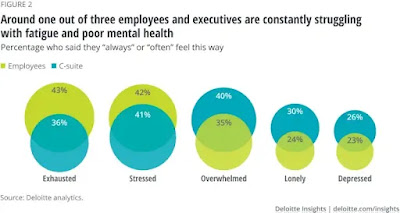"Baseball is 90%
mental, and the other half is physical."
--Yogi Berra (Baseball Hall of Famer)
Besides the offseason, strikes, and lockouts, how
much inaction is there in Major League Baseball?
Before
attempting to answer that question, let's look at the state of today's National
Pastime.
The delayed Opening Day was on Thursday, 7
April 2022. The first game of the MLB season was a matchup between the Boston
Red Sox and New York Yankees, played at Yankee Stadium. The Bronx Bombers won 6 - 5.
The last game of the 2022 MLB regular season
will be played on Sunday, 2 October. With the expansion of the playoffs, MLB
eliminated the tie-breaking 163rd game teams typically played on Monday. The postseason will begin on 4 October, concluding the entire season after
the final out of the World Series.
The 2022 MLB All-Star Game will be played on Tuesday,
19 July, at Dodger Stadium.
There are 162 games of baseball this season, barring any unforeseen developments. Less than 100 games are remaining. 1
Money ball
How does baseball make money? The 30 MLB teams have a 26-man roster (expanded during the playoffs) with an average payroll of $148 million. So everyone is paid, win or lose.
The owners have new contracts with TBS, ESPN, plus local outlets. Beginning this year, they will take in about $100 million each before selling a single ticket, according to Blake Williams, Managing Editor, Roundup News.
Is it time for a 7th-inning stretch?
 |
| (C) Post-Gazette |
My
earliest recollection of professional baseball is a magical one. My dad's
favorite team, the Pittsburgh Pirates, was playing the New York Yankees in the
1960 World Series. The seventh and deciding game of the series was at Forbes
Field in Pittsburgh.
We
were with friends on the playground at Calvin Britain Grammar School in Benton
Harbor, Michigan, listening to the game on a transistor radio.
In the bottom of the ninth inning, on 13 October at
precisely 3:36 p.m., on a pitch thrown by Yankee reliever Ralph Terry, Pirates shortstop Bill Mazeroski hit the most dramatic home run in World Series history.
Final score--World Champion Pittsburgh Pirates 10, New York Yankees 9.
There
was bedlam that afternoon as 36,683 Pittsburgh fans drowned out play-by-play
announcer Mel Allen. But, I knew that dad, from the City
of Bridges, would be a happy man in his own quiet way.
Slow
to change
The
Associated Press reported the average
time of a nine-inning game set a record once again despite Major League
Baseball's efforts to improve the pace. The commissioner's office said the average was 3 hours, 10 minutes,
and 7 seconds for the 2021 regular season. That was up from 3:07:46 for the
pandemic-shortened 2020 season and 3:05:35 in 2019.
Starting with the 2018 season, MLB imposed
stricter limits on mound visits by managers, coaches, and players; however,
there were some exceptions. Commercial breaks are shorter. And pitchers may
throw as many warmup pitches as they want before the commercial break ends but
are no longer guaranteed eight warmup pitches.
Even
with rules designed to trim playing time, opposed mainly by the
players' union, the games are taking longer. Those 25 258 fans (on average)
who turn out to root for the home team are patient to a fault. But for how much
longer?
Why are major league games getting longer?
Grant Brisbee, who writes on baseball for SB Nation, decided to look into that question. So Brisbee stopwatched two games, one from 1984 and one from 2014. Some things were the same. The changes were in the inaction pitches--balls, strikes, or missed swinging strikes that didn't result at the end of an at-bat or the advancement of a runner.
What was different was the time those inaction pitches took up. In the 1984 game, inaction pitches accounted for 32 minutes and 47 seconds. In the 2014 game, they accounted for 57 minutes and 41 seconds. A nearly 80 percent increase.
Frisbee said, "Pitchers don't get rid of the ball like they used to, and hitters aren't expecting them to get rid of it like they used to." As a result, a couple of minutes to each inning adds close to a half-hour to the game.
Slowpitch
In any given year, just under 70 million people will attend a major league baseball game.
What do they see? Very little.
This brings us back to our original question about inaction.
According to a non-scientific stopwatch study conducted by baseball statistician Steve Moyer, published in The Wall Street Journal in 2013, there are 17 minutes 58 seconds of action and 2 hours 39 minutes and 58 seconds of inaction. (A similar study found just 11 minutes of action in NFL football games.) 2
Action:
-Balls in play or runners advancing: five minutes, 47 seconds.
-Other actions (such as pitches, foul balls, and pickoffs): 12 minutes, 11 seconds.
Inaction:
-Time between batters: 33 minutes, 39 seconds.
-Time between pitches: one hour, 14 minutes, 49 seconds.
Only 7 Teams Have a Cost Index Under $200
The MLB
Fan Cost Index calculates the average price for four people to see a game at
any given ballpark. It includes the cost of four tickets,
parking, four hot dogs, four drinks, two programs, and two of the stadium's
least expensive hats.
Across
all 30 teams, a family of four can take in a game for less than $200 at only
seven stadiums. Among 30 MLB teams, the average ticket now costs $65.
Let's call this baseball inflation--paying more and getting less.
More challenges ahead
There's a lot of talk in professional sports, but money talks the loudest.
Here's a short list of dollar-driven critical issues facing professional baseball:
1. Aging fans who put up with high costs because they can. What about younger families who want to attend games but can't?
2. Starting playoff and World Series games later to placate networks (who pay the bills) but short-change younger fans who often have school the following day. Little League participation rates continue to decline (as do all youth sports). Where is the inspiration to play ball?
3. MLB exclusive deals with pay-walled and soon-to-be pay-walled streaming partners. Keeping loyal fans from watching their favorite teams at certain times of the day seems counterintuitive.
4. Robo umpires to eliminate human error--as if using technology would be error-free.
What we've learned in our study is that the antidote to inaction is not action--it's the right action at any given moment.
Extra innings
Perhaps Major League Baseball commissioner Rob Manfred and billionaire team owners could benefit from the wisdom offered in a movie, The Sandlot--
"Man, this is baseball. You gotta stop thinking and just have fun."
No doubt Yogi Berra would agree.
www.Strategist.com
© Bredholt & Co.
1 SportsNaut.com
2 The number of stopwatched games is low due to the task's difficulty. Politifact judges this study to be mostly true.












